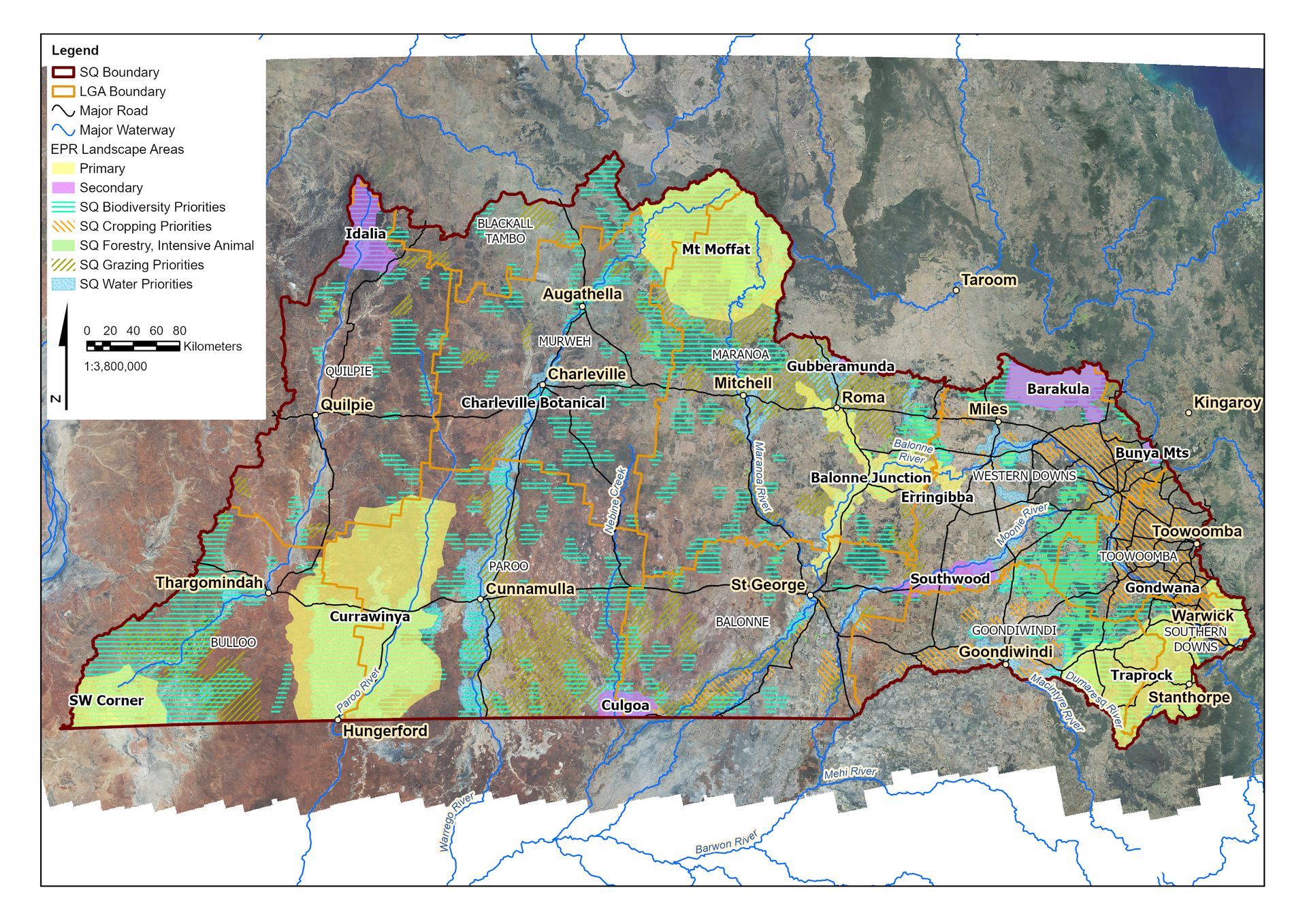Stronger Landscapes Plan
Emergency Preparedness and Response Plan For Biodiversity and Agricultural Assets
Over the past decade, communities across Australia have faced a growing number of natural disasters including prolonged droughts, destructive floods and bushfires. Southern Queensland is one of the most climate-exposed regions in the country, having experienced firsthand the devastating consequences of extreme weather. The recent widespread flooding events are stark reminders of the toll these disasters take on people, landscapes, ecosystems, and agricultural productivity.
In response, Southern Queensland Landscapes has developed the Stronger Landscapes Plan (2024). This strategic plan is focused on strengthening disaster readiness and resilience across the region, particularly for biodiversity, land and agricultural systems that are critical to both environmental health and community livelihoods.
The Stronger Landscapes Plan has been developed to strengthen the integration of environmental and agricultural values into emergency planning frameworks. The plan takes a holistic and forward-thinking approach, embedding the protection of biodiversity and agricultural assets at every stage of the emergency management cycle - from prevention and preparedness, through to response and recovery. The plan outlines a range of pre-emptive and responsive actions designed to reduce vulnerability, support rapid recovery and maintain ecological and productive capacity in the face of disaster.
Key components include:
• Preservation of critical habitats and native ecosystems, ensuring biodiversity hotspots are protected and able to recover post-disaster.
• Strengthening landholder and community knowledge, enabling informed and adaptive management responses.
• Promotion of sustainable land management practices, which reduce environmental degradation and improve the ability of land and water systems to absorb and recover from shocks.
• Support for post-event restoration, including native vegetation re-establishment and soil and waterway rehabilitation.
Region-Specific Risks and Scenarios:
The Southern Queensland region faces a unique combination of disaster risks. The plan considers a range of likely scenarios, including:
• Tropical and severe storms, which can damage infrastructure, crops, and natural habitats.
• Flooding, particularly in low-lying and riparian areas, affecting both agricultural productivity and native ecosystems.
• Drought and water scarcity, impacting crop yields, livestock health, and ecological resilience.
• Late-season bushfires, intensified by dry conditions and invasive vegetation.
• Biosecurity threats, including pest and disease outbreaks that threaten native species and agricultural commodities.
• Heatwaves and extreme weather events, placing pressure on both natural and human-managed systems.
By placing biodiversity and agricultural natural capital at the heart of emergency planning, Southern Queensland is better positioned to withstand and recover from the challenges posed by a changing climate and unpredictable disaster patterns. This plan provides a blueprint for integrated, landscape-scale action, empowering local communities, landholders, and agencies to protect what matters most, our land, our livelihoods, and our natural heritage.
Southern Queensland Landscapes continues to work closely with regional partners, Traditional Owners, landholders and government stakeholders to implement this plan and ensure the region is well-prepared for the future.
Southern Queensland Assets:
• Plant Communities of National Environmental Significance – 27% of SQ
• Habitat for animals and plants of National Environmental Significance is likely in 36% of SQ
• Protected Areas and Nature Refuges - 7% of SQ
• Cropping 2.5 million ha - 8% of SQ
• Main Range World Heritage Area
Biodiversity Assets:
Biodiversity assets are critical for the health and prosperity of the environment, society and the economy. It is important to prepare, preserve and repair these assets before, during and after emergencies or natural disasters. These assets include:
• Species of National Environmental Significance
• National Heritage Places
• World Heritage Areas
• National Parks and Nature Refuges
• Plant Communities of National Environmental Significance
• Ramsar Wetlands of International Importance
• Remnant Vegetation for Biodiversity
• Regionally Significant Natural Areas
Agricultural Natural Assets:
Agricultural Natural Assets provide food and fibre for people, animals and industry and include:
• Regionally Significant Cropping Land
• Water including waterways, springs and ground water
• Regionally Significant Grazing Land
• Forestry
• Intensive Animal Production
• Bushland for Shade and Fodder
The following map shows areas of Southern Queensland which have biodiversity and agricultural natural assets which are of national importance according to the features listed above.
The Stronger Landscapes Plan will support responses to predicted future impacts.
• An increase in more intense and larger impact area of wildfires.
• Increase in variability/changes in seasons due to climate change including droughts.
• Strong winds and storms can affect up to 19% of the area of natural assets in SQ.
• Increased localised flooding due to more isolated and intense rainfall events.
• Pest plants and animals including new outbreaks.
• Impact of plant and animal diseases, especially new outbreaks.

